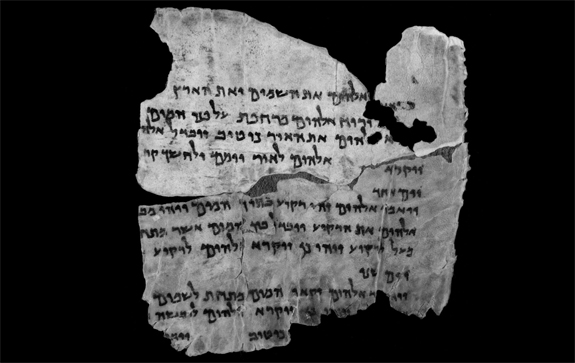The Dead Sea Scrolls Just Went Digital
Written between 200 BC and the middle of the first century AD, the Dead Sea Scrolls were discovered again 1947

The Dead Sea Scrolls include one of the earliest known copies of the stories of Genesis. Photo: Israel Antiquities Authority
In 1947, hidden in a cave amongst the desolate landscape of Qumran, in the West Bank, one of the most important religious texts for Jewish and Christian traditions was discovered: the Dead Sea Scrolls.
The scrolls, said Andrew Lawler for Smithsonian Magazine, consist of more than 800 documents, “made of animal skin, papyrus and even forged copper.”
Among the texts are parts of every book of the Hebrew canon—what Christians call the Old Testament—except the book of Esther. The scrolls also contain a collection of previously unknown hymns, prayers, commentaries, mystical formulas and the earliest version of the Ten Commandments.
The scrolls, say Lawler, written between 200 BC and the middle of the first century AD, predated the first previously known Hebrew versions of the texts by up to a thousand years.
Following their discovery, the incredibly important texts found their way into the hands of The Israel Museum, Jerusalem. Last year, in partnership with Google, the museum put digitized versions of five of the scrolls online. Now, says the Associated Press, that initial effort has been followed by another 5,000 images of the ancient scrolls, all browseable online.
Only five conservators worldwide are authorized to handle the Dead Sea Scrolls,” said Shuka Dorfman, director of the Israel Antiquities Authority. “Now, everyone can touch the scroll on screen around the globe.”
The dead sea scrolls join a push towards digitization that is seeing rare, ancient, and important works preserved online. This effort has recently included another important religious text, the ancient Codex Alexandrinus, one of the earliest known Greek bibles.
More from Smithsonian.com:
One of the World’s Oldest Bibles Is Now Online
Zoom Around This Detailed Map of the Ancient World
Read Sir Isaac Newton’s Works Online
/https://tf-cmsv2-smithsonianmag-media.s3.amazonaws.com/accounts/headshot/smartnews-colin-schultz-240.jpg)
/https://tf-cmsv2-smithsonianmag-media.s3.amazonaws.com/accounts/headshot/smartnews-colin-schultz-240.jpg)